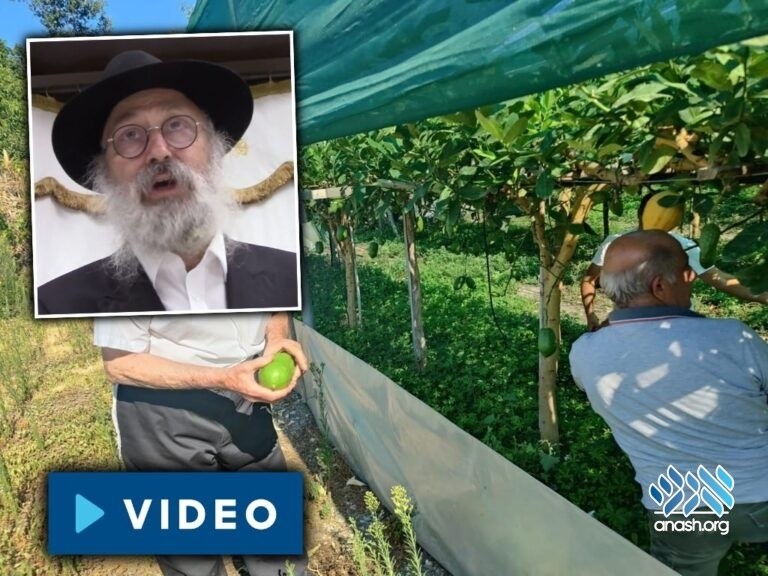י״ג תשרי ה׳תשפ״ד | September 27, 2023
Watch: Is Your Calabria Esrog Kosher?
Chabad Chassidim are particular to use Calabrian esrogim that aren’t grafted. However, modern grafting methods don’t change the look of the fruit or its DNA. How then do we know if it’s kosher? Rabbi Eliyahu Matusof explains.

Chabad Chassidim are particular to use Calabrian esrogim that aren’t grafted. However, modern grafting methods don’t change the look of the fruit or its DNA. How then do we know if it’s kosher? Rabbi Eliyahu Matusof explains.
The past week, Kollel Anash of Crown Heights had the honor of hosting a shiur by Rabbi Eliyahu Matusof on the halachic issues associated with esrogim murkovim, grafted esrogim. Rabbi Matusof serves as a senior editor on the Otzar haChassidim-Kehos staff. Aside from his work on seforim of Chassidus, he has also published several of his own works. He has recently released a new sefer titled Esrogim beHalacha.
Rabbi Matusof’s shiur focused mainly on the Chabad tradition to specifically use esrogim grown on the southern Italian coast in the region of Calabria. These esrogim are also known as Yanover Esrogim, since “Yanova” is Yiddish for Genoa, the port city in northern Italy where in past times these esrogim would be shipped to other parts of Europe.
He explained that the grafting methods being done in Calabria in modern times, are different from what was done in the past. Recent methods do not change the type of fruit the tree will bear. Therefore, the esrogim from grafted trees and the esrogim from non-grafted trees look exactly the same, having even the same DNA. Rabbi Matusof therefore explained that as long as a mashgiach was present to make sure the esrogim were cut from a non-grafted tree, there is no concern at all with the Calabria esrogim.
***
For the past eleven years, Kollel Anash has been dedicated to assisting young married men master the laws of Taharas Hamishpachah and Shabbos. The halachos are studied in depth; from the sources in Gemara and Rishonim all the way down to halacha lemaaseh. Additionally, the Kollel has a unique three-year track for studying the halachos of Choshen Mishpat.
The kollel is located at Congregation Anash 770 Montgomery Street and is under the leadership of Rabbi Michoel Lerner. The Kollel was founded and is sponsored by Rabbi Dovid Fischer, Rov of Congregation Anash.
Watch Rabbi Matusof’s shiur here:
AUDIO:



We appreciate your feedback. If you have any additional information to contribute to this article, it will be added below.